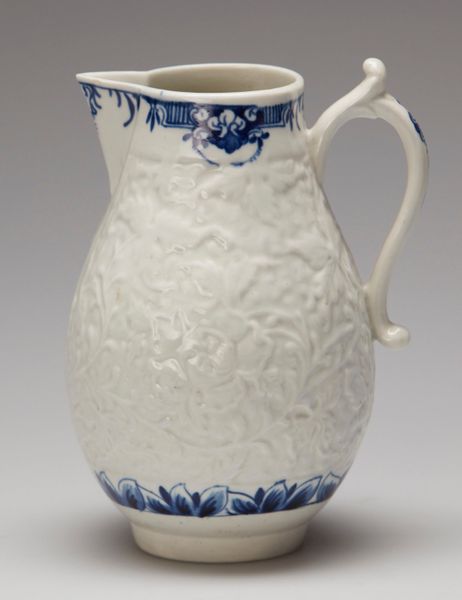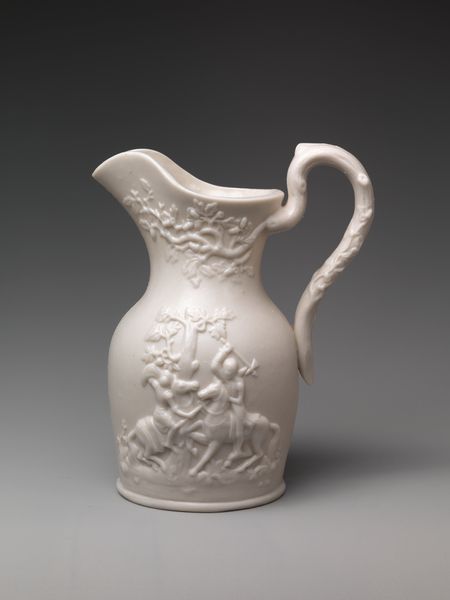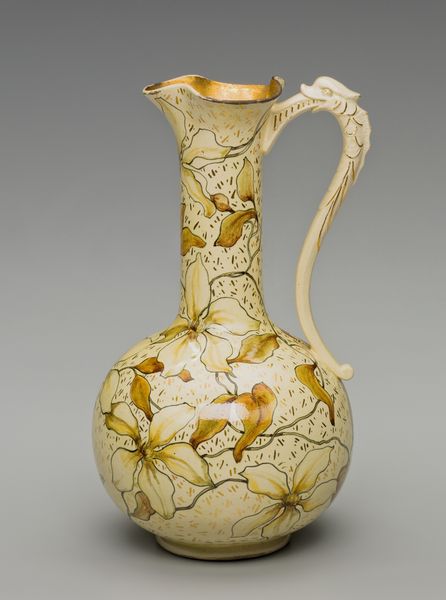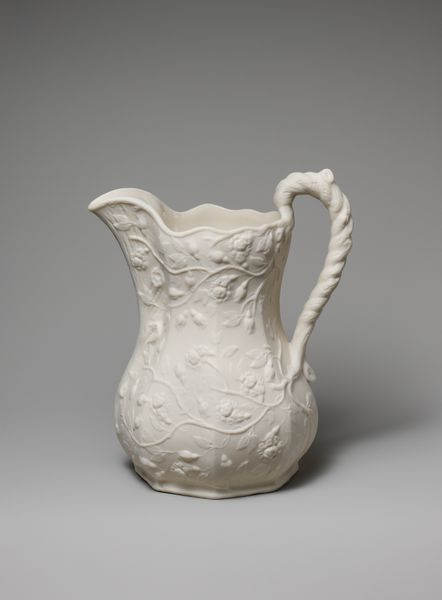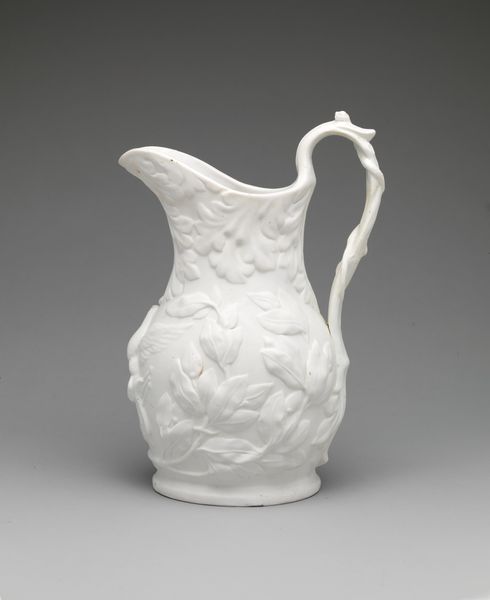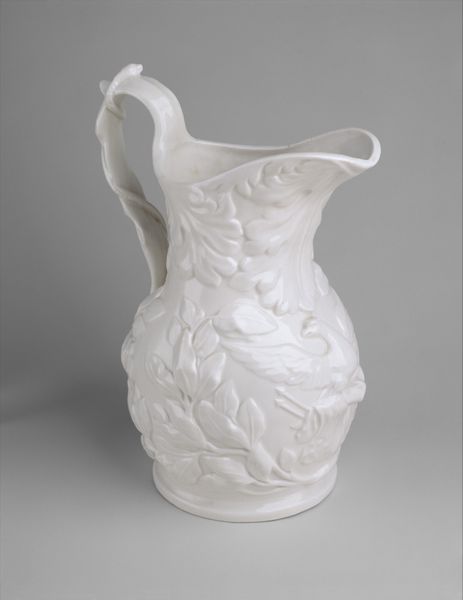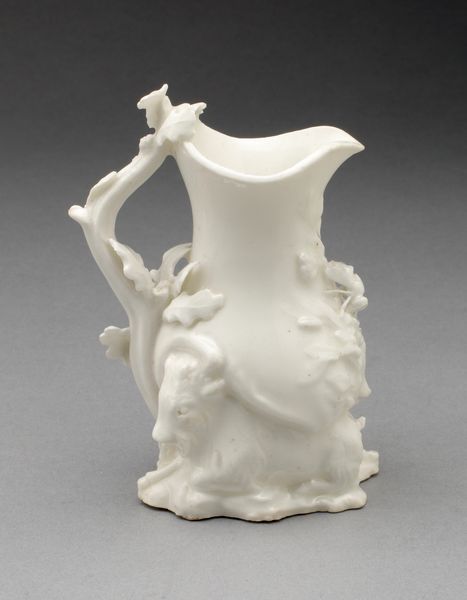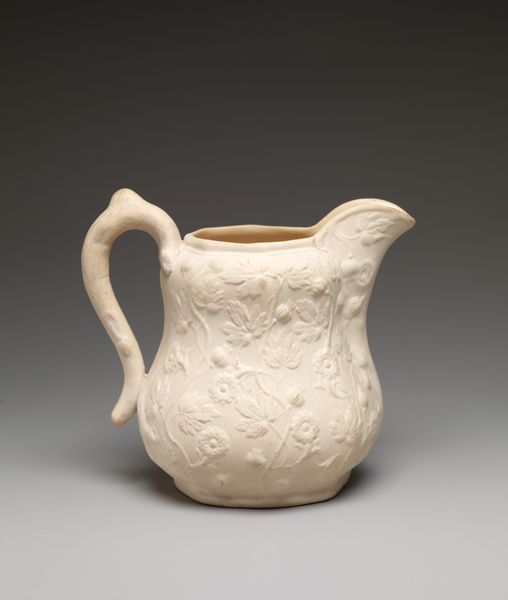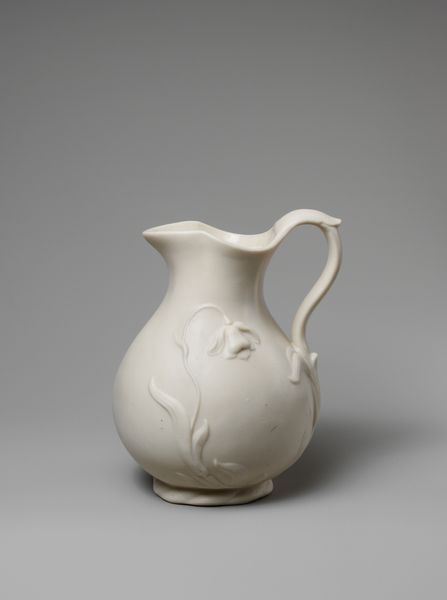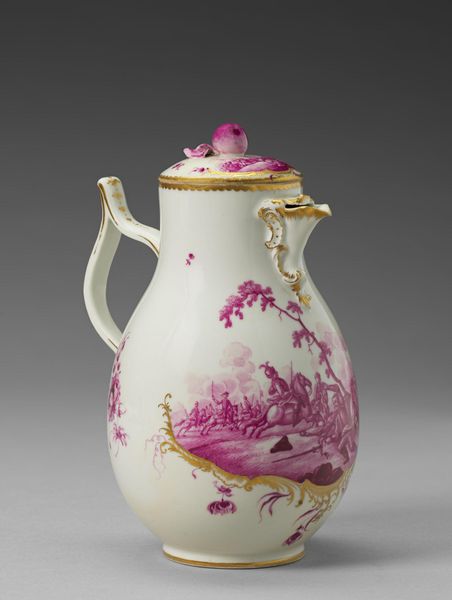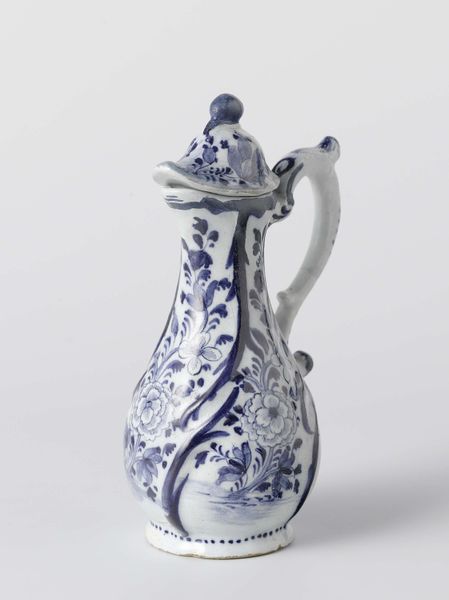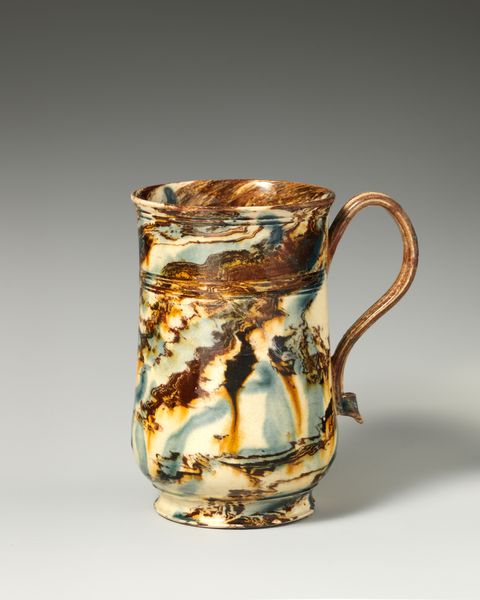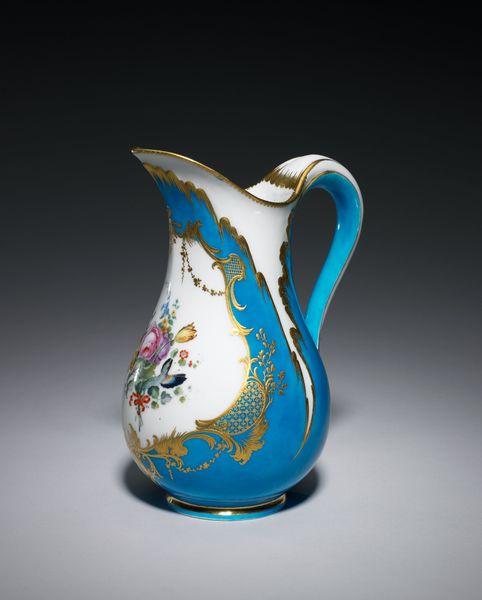
ceramic, porcelain, sculpture
#
asian-art
#
ceramic
#
porcelain
#
sculpture
#
orientalism
#
ceramic
#
decorative-art
Dimensions: confirmed: 9 3/8 × 6 × 5 1/2 in. (23.8 × 15.2 × 14 cm)
Copyright: Public Domain
Curator: This is the Ewer with Twisted Trunk Handle, made in 1873 by Copeland. You can find it here at the Metropolitan Museum of Art. It's porcelain. Editor: Well, it's delicate! The pale grey background gives it a really interesting, muted tone, but the raised white details really pop. I'm curious about the handle - it looks like a branch. Curator: Indeed! And look closely—the white details include a dragon, foliage, and a bird. This object really showcases the nineteenth-century trend of Orientalism. Copeland, a British company, clearly looked to East Asian motifs for inspiration. Editor: That contrast is everything, the white porcelain against the light blue glaze makes this piece feel so intricate and precise, especially considering it’s from the late 19th century. The golden trim also lends a bit of… unexpected ornamentation? Curator: I agree; that gold trim is the cherry on top of cultural appropriation, ha! These decorative arts objects often present a very narrow view of complex Asian cultures, perpetuating stereotypes while extracting aesthetic elements. Whose stories were being told through these objects, and whose were being erased? Editor: From a formal perspective, the upward motion created by the dragon and the branch is so clever and perfectly balanced by the curves of the vase itself. But I agree that considering this ewer through our contemporary, more aware, lenses really brings out other layers of its history and context. It challenges us. Curator: Exactly. Its form might evoke elegance and craftsmanship, but when you see that this aesthetic is rooted in colonial attitudes, it shifts your perception. Editor: Ultimately, the ewer’s success is rooted in those carefully-considered juxtapositions. I’m intrigued by the formal details and simultaneously wrestling with its cultural context. Curator: Well said! This duality keeps the object, and its place in history, alive.
Comments
No comments
Be the first to comment and join the conversation on the ultimate creative platform.
